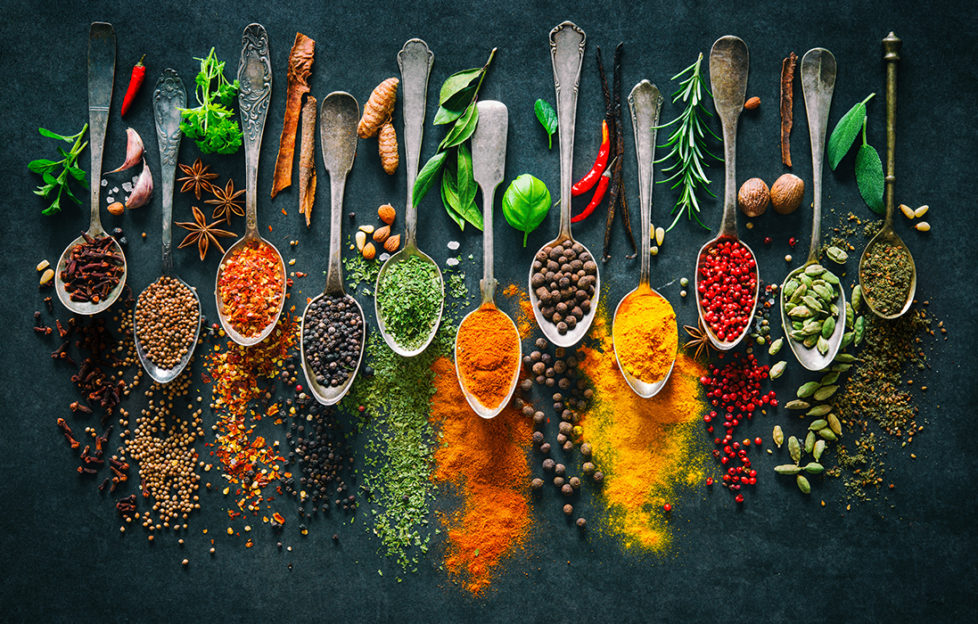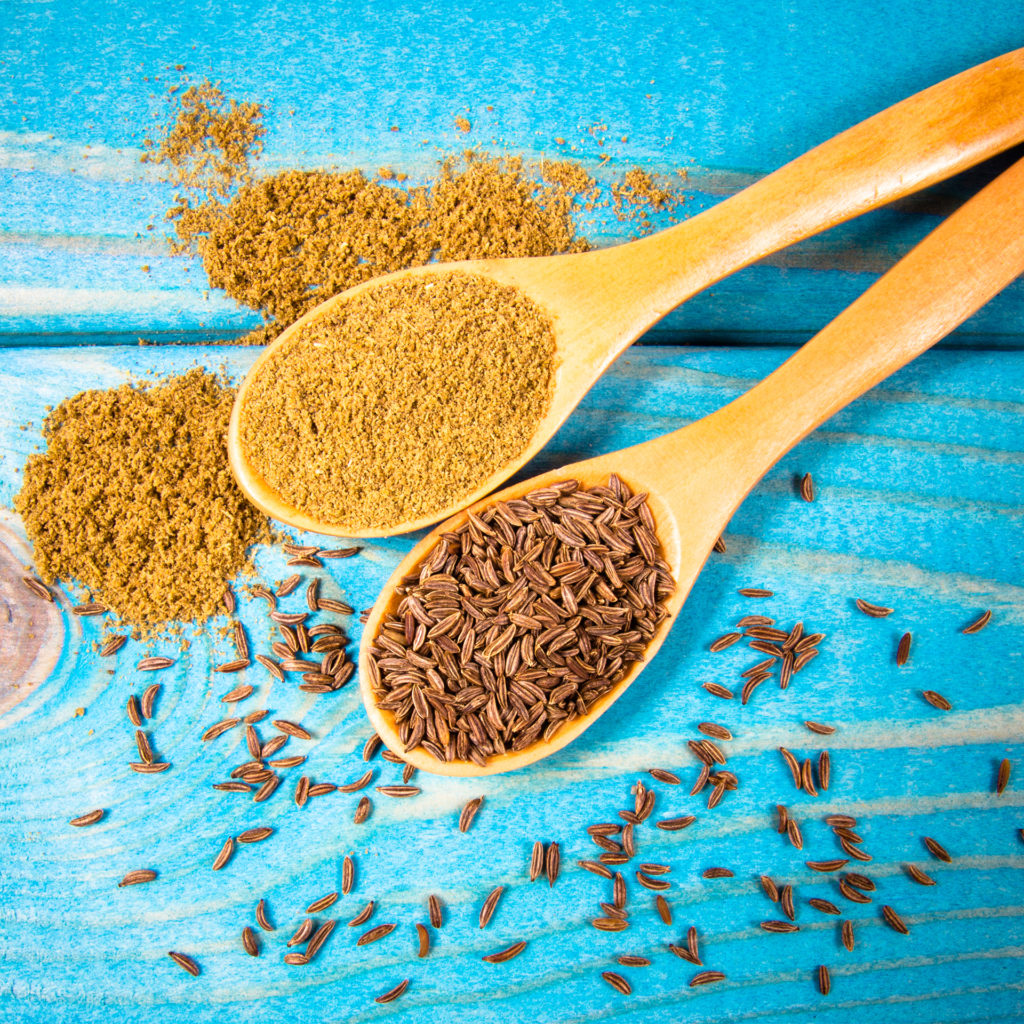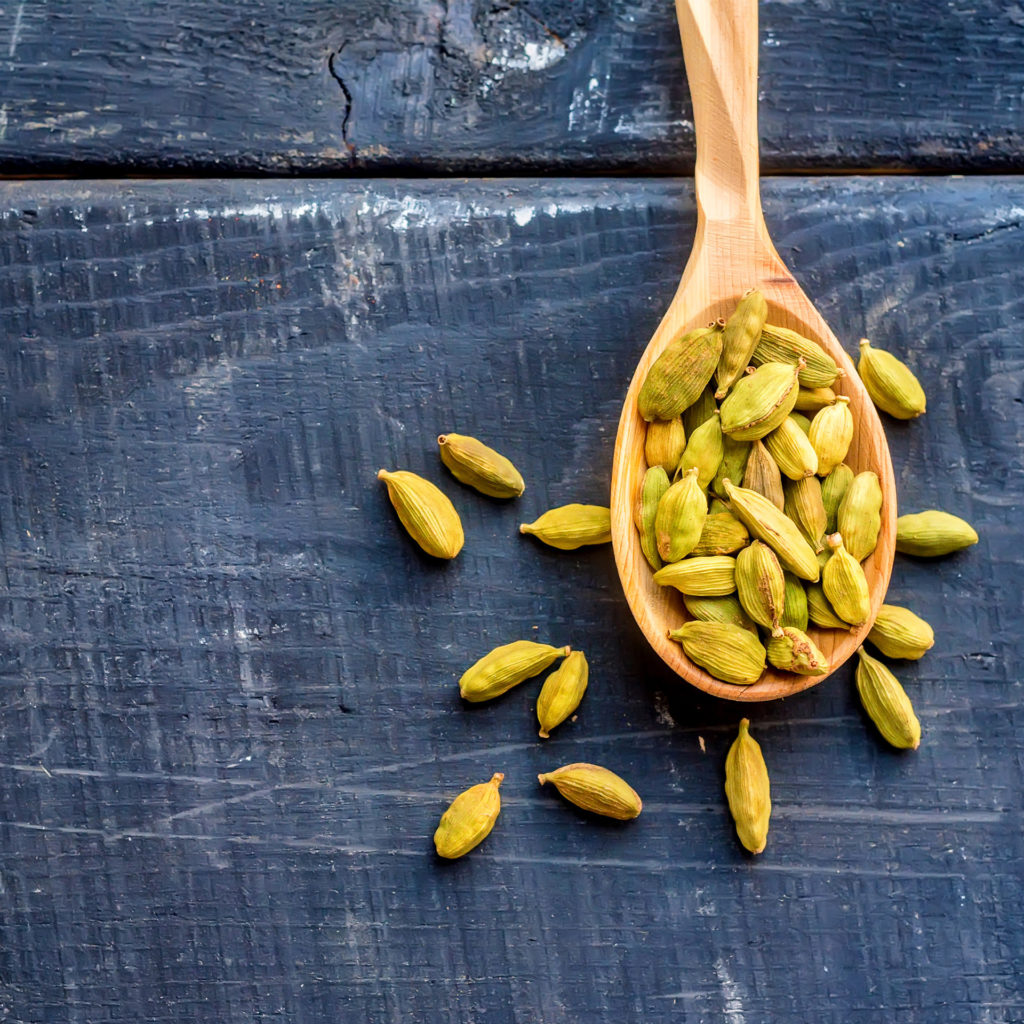Ingenious Spice Swaps During Lockdown

 Niki Webster is the self-proclaimed Spice Queen! The name behind Rebel Recipes – the brand-new cookbook for plant lovers and the blog of the same name – Niki uses spices in a fragrant, rule-breaking way…
Niki Webster is the self-proclaimed Spice Queen! The name behind Rebel Recipes – the brand-new cookbook for plant lovers and the blog of the same name – Niki uses spices in a fragrant, rule-breaking way…
Spices are at the core of my cooking, along with fresh seasonal veg where possible. Spices transform simple ingredients into the most spectacular things. Adding just one spice can elevate a dish to a whole new level.
Understanding how to utilise different spices is so important, especially in plant-based cooking – even more so in the current climate.
I’ve always loved spice. From a young age, I was often turned off my mother’s rather bland traditional European flavours. As soon as I discovered curry paste, my life was transformed.
Food finally started to dance and sing with flavour and excitement.
It was the start of the most flavourful journey. Spices when used correctly can add layers of flavour, depth, richness and colour. Personally, I think a mix is better – flavour profiles blend together to add complexity to a dish.
But just a teaspoon of turmeric or paprika can really heighten the flavours of the ingredients you are cooking with and help reduce the use of salt, fat or sugar.
You can also use certain spices in replacement for others if you are unable to source the ones your recipes require.
What’s the best thing about spices?
They are unique to their cuisine and culture, as they bring out the natural flavours of their paired ingredients. But as our palates have matured with desire for more multi-cultural diversity in our dishes – both in and out of our own kitchens – we have learned how to balance and introduce these spices to our own produce.
Spices are no longer just associated with Middle-Eastern cuisines and represented by ancient dishes. They are starting to be paired with everything from British apples to a traditional French cassoulet. They should be loved and celebrated, now more than ever.
As we undergo a shift from our fast-paced, easily-accessible world into a more carefully sought, slower one, why not turn your spice cupboard into your best friend?
Even with limited ingredients, spices can transform dishes to ensure boredom is never a possibility.
Cumin

Pic: Shutterstock
The secret to chilli, curries and many of your favourite smoky, earthy dishes. It works great on tofu and is best dry-roasted in the pan.
- Use cumin in Mexican, Indian and Moroccan cuisines
- It complements dried lentils, beans, rice and couscous as well as fresh cauliflower and potato
Use cumin seeds combined with spiced tomatoes for a delicious breakfast Shakshuka. Combine cumin with black mustard seeds and turmeric as a base for any curry dish, and add cumin to a dukka blend to help elevate soups, stews and more.
You can also use cumin as a substitute for:
- Ground and dried coriander – add half the cumin compared to what the recipe states, with a teaspoon of lemon juice for a similar flavour.
- Caraway seeds – use double the cumin for the same hit.
- Chilli powder – use a mix of cumin, cayenne, paprika, garlic and oregano to create your own chilli mix.
Smoked Paprika
This is a pretty universal spice, but one that hates the heat. Add to liquid bases or on moist ingredients to avoid burning. Its flavour profile emits sweet, spicy and smoky elements, which works perfectly in tomato and cheese-based sauces as well as adding depth to curries and chillis.
- You can use this spice in Indian, Spanish and Hungarian dishes
- It goes fantastically with chickpeas, potatoes and corn-based products.
Use in a homemade harissa paste, super simple and definitely worth the time. Add into Muhammara, a hot red pepper dip created using charred red peppers or create your own home-made baked beans with a smoky undertone, an all-time favourite on the blog.
Use smoked paprika as a substitute for:
- Chipotle powder – add ¾tsp smoked paprika to ¼tsp chilli powder to create a close chipotle mix
- Cayenne pepper – add ¼tsp at a time till you reach the desired taste
- Black pepper – add half the quantity stated in the recipe, plus 1tsp lemon juice for a similar spice to the cracked pepper, but with an added smoky hit.
Turmeric
The bright yellow spice is known in Asia for both cooking and medicinal properties. Instantly transform simple meals with a touch of turmeric which can help add flavour, depth and colour to dishes.
- You can use this spice in Asian, Indian and Thai dishes.
- It goes beautifully with rice, salad dishes and milk/cream-based sauces.
Use in cookies to create a delicious snack packed with spiced notes and dried fruit. Add to oats for a warming breakfast option, or stir in to a pancake or crepe batter and serve with fresh, zingy herbs.
You can also use turmeric in place of:
- Saffron – the closest substitute for this expensive ingredient. Use the same quantity
- Mustard – use the same quantity
- Cumin – use half the quantity stated in the recipe.
Cardamom
This beautifully fragrant spice that loves to be toasted works well in both sweet and savoury dishes without the need for added sweetness.
- You can use this spice in Middle-Eastern, Asian and Swedish dishes
- It pairs perfectly with rice, milk/cream-based dishes and desserts and root vegetables such as squash.
Use to create Middle-Eastern desserts such as pistachio, date and tahini cake or Malabi, a rose and cardamom rice pudding dessert. Alternatively stir it into a mild and creamy korma sauce with plenty of earthy mushrooms.
You can also use cardamom as a substitute for:
- Cinnamon – use the same quantity in savoury dishes but half in sweet
- Ginger – mix together cardamom, cinnamon and nutmeg to replace the ginger spice needed
- Nutmeg – mix equal quantities of cardamom and cinnamon together then use the same quantity as required in the recipe.
Caraway Seeds
These distinctive seeds have an earthy hint with an aniseed flavour that pairs well with other spices and herbs and is best known for their use in baking.
- You can use this spice in German, Hungarian and Austrian dishes
- It marries well with baked goods, apples and potatoes.
Use to add flavour in soda bread for a lovely distinctive flavour, in seeded crackers for fragrance or on top of a roasted cauliflower with a hint of lemon juice.
Use caraway seeds a substitute for:
- Cumin – use double the quantity stated
- Coriander – use the same quantity with a splash of lime juice
- Star Anise – use the same quantity with a grating of clove





